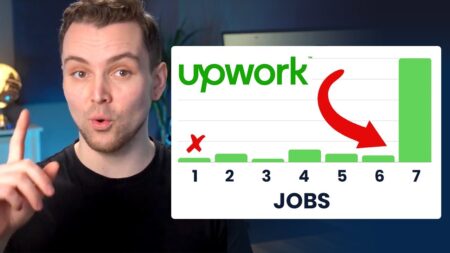Navigating the U.S. Health Insurance system as a freelancer can be pretty overwhelming, especially the first time you do it.
While many countries have healthcare covered by their central government (called a single-payer system) the United States typically leaves health insurance to employers, Medicare, Medicaid, or Veterans Affairs.
But millions of Americans, and many freelancers, fall between the cracks of this system. If you’re self-employed, unmarried, and over the age of 26, you are probably on your own.
If that sounds like you, here are 7 things to consider when buying health insurance.
Money Note: If an extra $1K–$5K/month would change your 2026 goals (debt, savings, travel, freedom), you’ll want to catch this: free live workshop from a freelancer who’s earned $4M+ online. No fluff. No gimmicks. A real roadmap. 👉 Watch the training or save your seat here »
1. Where do you buy insurance?
The Affordable Care Act (ACA) was passed in 2010 with the intention to make healthcare more accessible to millions of uninsured Americans.
When it was passed, the ACA created a federal insurance marketplace called Healthcare.gov.
The healthcare marketplace
The federal insurance marketplace allows individuals to purchase their own insurance plans, with insurance providers all over the country. If you were previously insured, chances are the same provider has a plan specifically for the healthcare marketplace.
You can often purchase plans directly from insurance providers, but the benefit of the marketplace is the ability to quickly compare available plans from different providers.
You will need to create an application, but it’s free and easy to do. Here are three options to consider within the marketplace search:
- Healthcare.gov: This is the direct interface with the federal healthcare marketplace
- Stride Health: Stride Health offers the same functionality as the federal marketplace application, but with a cleaner user interface. Stride will even provide a recommendation for the best plan for you based upon the questions it asks you in the process.
- Health Sherpa: Health Sherpa is very similar to Stride Health. Both services let you compare plans in a clean interface and recommend options specifically for you.
Off-exchange plans
It is possible to buy an insurance plan without going through the federal marketplace.
You can often purchase plans directly from insurance providers like Medical Mutual, Oscar, and others, however in this case you don’t get the ease of comparing plans side-by-side like in the marketplace.
There are also services like Direct Primary Care, which are an alternative to services paid for by insurance. These services charge a monthly, quarterly, or annual fee.
Be sure to do plenty of research on these options if you explore them, as they are not kept to the same standards as healthcare marketplace plans.
2. Do you qualify for premium tax credits?
The application from the health insurance marketplace is pretty straightforward. To be eligible, you must live in the United States, be a U.S. citizen or national, and you can’t be incarcerated.
A key part of the application process is determining whether or not you are eligible for premium tax credits. These tax credits are intended to make insurance accessible for low-income families and individuals, so they are dependent on your projected income.
The lower your projected Adjusted Gross Income, the higher the tax credit you may qualify for.
You’ll want to be as accurate as possible in reporting your projected Adjusted Gross Income. If you underestimate your income and receive a high tax credit, you will be liable for repaying that tax credit when you file your annual return.
But if you overestimate your income, you may receive a higher tax credit when you file your return.

3. How much do you plan to use your insurance?
Everyone’s situation is different. So before you buy insurance, you should think about your expectations for how much you’ll use your insurance this year.
It’s impossible to know exactly how much you’ll need your insurance in a given year because you can’t predict accidents or illnesses. But, barring any unforeseen circumstances, what can you anticipate?
If you have an existing medical condition, subscription medications, chronic conditions, or ongoing treatment, you will use the insurance more than someone who feels completely healthy.
When comparing plans, there are different metals used to rate their cost. These metals include Bronze, Silver, Gold, and Platinum.
A good rule of thumb is that the more valuable the metal (Platinum is the most valuable, Bronze the least) the stronger your coverage will be. Of course, stronger coverage also comes with a higher monthly premium.
Bronze plans will require the most out-of-pocket costs for care, and Platinum will generally require the least.
But remember, higher metal grades mean higher costs for premiums. If you don’t have existing conditions, or if you expect fewer medical expenses, you may want to consider a lower metal rating for a lower monthly premium.
4. What networks are important for you?
Each health insurance plan defines which providers are covered. There are two major plans for you to be aware of:
Health Maintenance Organization (HMO) plans require you to choose a Primary Care Provider (PCP) who plays the role of “gatekeeper” for any care you receive. Your PCP would refer you to any specialists, labs, or medical facilities (with the exception of emergencies or OB-GYN).
HMO plans don’t cover your care if it’s given by an out-of-network provider.
Preferred Provider Organization (PPO) plans typically provide coverage whether it’s done by an in-network or out-of-network provider. And they do not require a PCP or referral for specialists. These plans are a little rarer than HMO plans.
It’s important to consider these plans and your lifestyle. If you travel a lot, you may want to find a PPO plan to allow for care out-of-network. If you have physicians you already see and want to keep seeing, you’ll want to ensure that they are covered by an HMO plan you opt into.
5. What do all these terms mean?
When comparing plans, you are going to be introduced to a LOT of new terminologies.

If you’re unsure of the meaning of any of the terms, you’ll want to look it up and make sure you understand it. A few of the most important terms to be aware of:
Premium: The amount you pay every month to keep your plan active.
Covered services: The benefits your health insurance company helps to pay for. How much they cover depends on your specific plan and the services you’re getting. Generally, the higher the premium, the more your plan covers the cost of a covered service.
Deductible: How much do you pay out-of-pocket for covered services before your health insurance company starts paying for those services. If you hit your deductible, what you pay after that depends on your plan; you may have a copay or coinsurance, or you may owe nothing at all. Your Premiums do not count towards your deductible.
Out-of-pocket max: The most you could pay for covered health services in a calendar year (not including your monthly premiums). After you hit your max (again, not counting premiums) you won’t owe any money for covered services. This is typically around $8,000 for an individual or $16,000 for a family.
Copayment (copay): A fixed amount you’re responsible for paying for a covered appointment, service, or prescription. If your plan says you have a $20 copay for a doctors appointment, that means you’ll pay $20 no matter what the visit actually costs — and your insurance will cover the rest.
Coinsurance: This is similar to a copay, but calculated as a percentage. If seeing your dermatologist requires a 20% coinsurance and the visit costs $100, you would owe $20 while your insurance pays the rest.
6. What is your budget?
Once you’ve chosen a plan and determined what your premium tax credit may be, it’s time for one final gut check: does your plan fit your budget?
You will be able to see your expected monthly premium after your tax credit. Is that a total that you are able to budget for every month for the next year?
Insurance is important, and you don’t want to make decisions strictly for budget, but if you’re comparing between a couple of plans and one of them seems difficult for you to budget for, then you may want to consider the other option.
7. Can you enroll in health insurance now?
If you’re looking to enroll in marketplace health insurance, you typically need to purchase a policy during what is called open enrollment.
Open enrollment is the time each year when you’re allowed to start, stop, or change your insurance plan, and typically it runs from November 1 through December 15.
If you fall outside of open enrollment, you’ll need to qualify for a Special Enrollment Period (SEP). A SEP is only available after qualifying events like moving, losing health coverage, having a baby, or adopting a child. If you qualify for a SEP, you’ll need to enroll in coverage within 60 days of that qualifying event.
The bottom line
Getting health insurance on your own can be overwhelming and scary at first. But it’s something you can learn and new tools like Stride Health and Health Sherpa make it easier than ever to compare plans.
Having health insurance coverage is important even if you feel healthy — you never know when a sudden accident or illness may occur. Do yourself a favor and explore your options before open enrollment closes on December 15!
Keep the conversation going...
Over 10,000 of us are having daily conversations over in our free Facebook group and we'd love to see you there. Join us!


